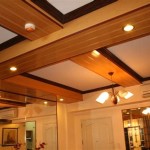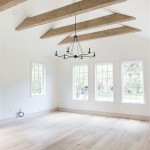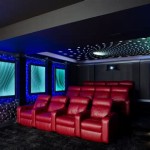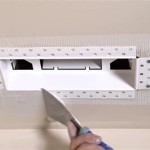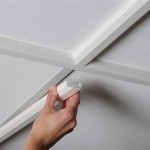False Ceiling Vs Normal Ceiling: Choosing the Best Fit for Your Home
When designing or renovating a home, the ceiling often receives less attention than walls and flooring. However, the ceiling plays a crucial role in the overall aesthetics and functionality of a space. It can influence the feeling of spaciousness, the lighting, and even the acoustic qualities of a room. Two common ceiling options are false ceilings and normal ceilings, each with distinct advantages and disadvantages. Understanding the differences between these two options can help homeowners make an informed decision that best suits their needs and preferences.
What is a False Ceiling?
A false ceiling, also known as a drop ceiling or suspended ceiling, is a secondary ceiling installed below the main ceiling. It is typically constructed from lightweight materials such as gypsum board, metal panels, or wood panels. The space between the false ceiling and the main ceiling can be used for various purposes, including concealing pipes, wiring, and ductwork, improving insulation, and integrating lighting fixtures.
What is a Normal Ceiling?
A normal ceiling, as the name suggests, refers to the original ceiling structure of a building. It is usually made from concrete, plaster, or drywall. Depending on the construction method, a normal ceiling may have visible beams or joists, or it may be smooth and seamless. Normal ceilings often lack the versatility of false ceilings, but they can offer a classic and straightforward aesthetic.
Key Differences Between False and Normal Ceilings
There are several key differences between false and normal ceilings that can influence your decision-making process.
1. Aesthetics and Design Flexibility
False ceilings offer greater design flexibility compared to normal ceilings. Because they are installed below the main ceiling, they can be customized to create a variety of visual effects. For instance, using different materials, shapes, and textures can add intricate patterns, define zones, and even integrate lighting elements seamlessly. False ceilings can also incorporate recessed lighting, creating a modern and sophisticated feel. Normal ceilings, on the other hand, offer a simpler, more traditional aesthetic. Their design is usually limited to the existing structure and its limitations.
2. Functionality and Practical Considerations
One significant advantage of false ceilings lies in their functionality. The space between the false ceiling and the main ceiling provides a convenient area to conceal wiring, plumbing, and ventilation systems, creating a cleaner and more organized look. False ceilings can also be used to improve the acoustics of a space by incorporating sound-absorbing materials. This can be particularly beneficial for rooms like home theaters or music studios. Normal ceilings, however, do not offer this flexibility and may require visible wiring or ductwork, potentially detracting from the aesthetics.
3. Installation and Cost
The installation process of false ceilings is generally more complex and time-consuming compared to normal ceilings. This complexity can translate into higher installation costs. Additionally, the materials used for false ceilings may also be more expensive than the materials used for normal ceilings. However, the added functionality and design versatility of false ceilings often justify the higher cost for many homeowners.
4. Maintenance and Repair
False ceilings often require more maintenance compared to normal ceilings. The space between the two ceilings can accumulate dust and debris, necessitating regular cleaning. Additionally, any repairs to wiring or plumbing may involve removing sections of the false ceiling, which can be inconvenient. Normal ceilings, on the other hand, are typically easier to clean and maintain. However, damage to a normal ceiling could require extensive repairs that may involve removing plaster or drywall, resulting in dust and disruption.
Which Ceiling is Right for You?
The choice between a false ceiling and a normal ceiling depends heavily on individual preferences, budget, and the specific needs of the space. False ceilings offer greater design flexibility, functionality, and the ability to conceal unsightly wiring and plumbing. However, they are more expensive to install and may require more maintenance. Normal ceilings, on the other hand, are more affordable, easier to maintain, and offer a classic, traditional aesthetic. Ultimately, the best choice is the one that best suits your individual needs and priorities.

Gypsum False Ceiling Vs Pop Designcafe

Pop Or Gypsum Which Is The Best False Ceiling Contractorbhai

Gypsum False Ceiling Vs Pop Designcafe

Gypsum False Ceiling Vs Pop Designcafe

8 Types Of False Ceilings Commonly Used For Home Ultratech Cement

False Ceilings In Singapore Pros And Cons Design Ideas

Gypsum False Ceiling Vs Pop Designcafe

Home Renovation False Ceiling Ideas Designs Blog Saint Gobain Gyproc

False Ceilings In Singapore Pros And Cons Design Ideas

8 Types Of False Ceilings Commonly Used For Home Ultratech Cement
Related Posts



